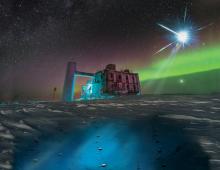Listen to today's episode of StarDate on the web the same day it airs in high-quality streaming audio without any extra ads or announcements. Choose a $8 one-month pass, or listen every day for a year for just $30.
You are here
Death and Life
It’s probably not a surprise that supernovas can be dangerous. In fact, the exploding stars have been implicated in one or more mass extinction events here on Earth. It is a bit surprising, though, that supernovas might also be a boon to life. But that’s the finding of a recent study.
A supernova is the violent death of a star. It can briefly outshine an entire galaxy. It produces a lot of ultraviolet and other forms of light that can be deadly. So any supernova that goes off close to Earth could be a big problem. A study in 2020, for example, suggested that one or more supernovas triggered a mass extinction 360 million years ago.
Supernovas also generate huge amounts of cosmic rays — heavy particles that zip through the universe at almost the speed of light. Too many cosmic rays can be bad. But just the right amount could be good for life.
The new study compared the rate of nearby supernovas to cycles of life recorded in ocean sediments. And it found a correlation: More supernovas equals more-abundant life. That could be because the cosmic rays increase the rate of cloud formation and affect global winds. Higher winds stir up the oceans, bringing more nutrients to the surface and boosting the amount of life. That also leads to more organic compounds being stored in ocean sediments, which boosts oxygen production.
The idea is still pretty new, but it hints that life on Earth can benefit from death in the stars.
Script by Damond Benningfield





